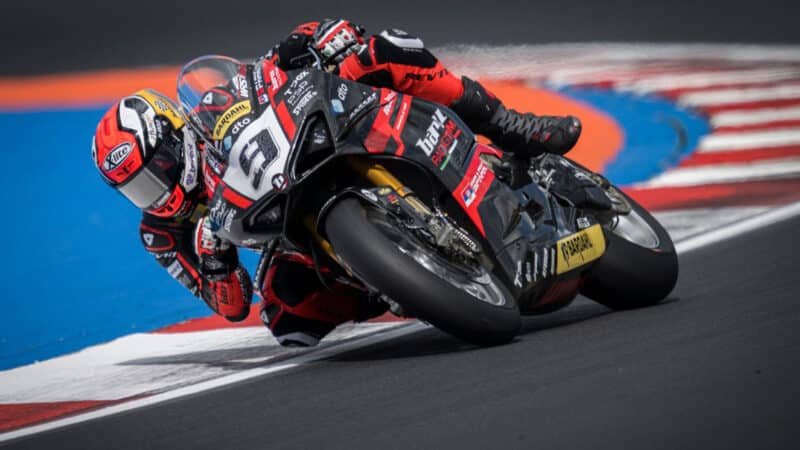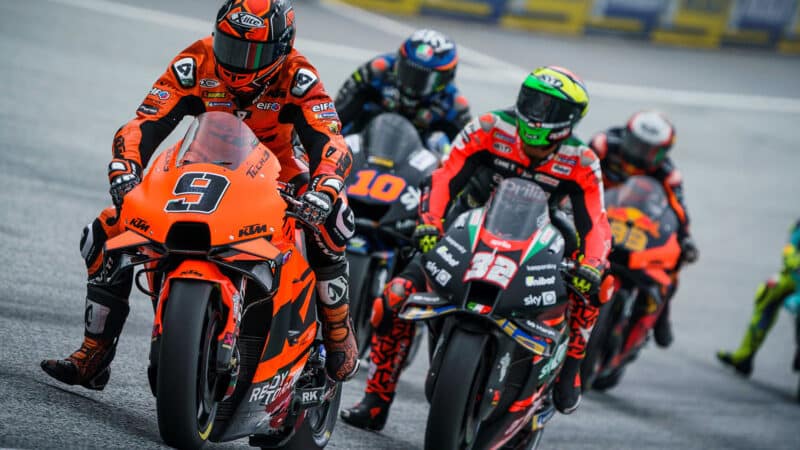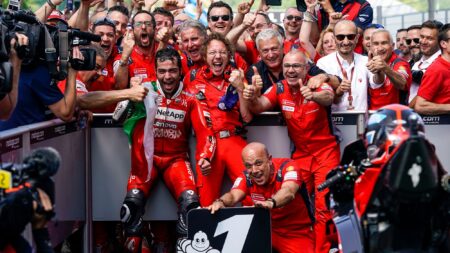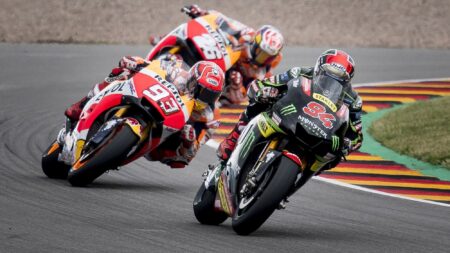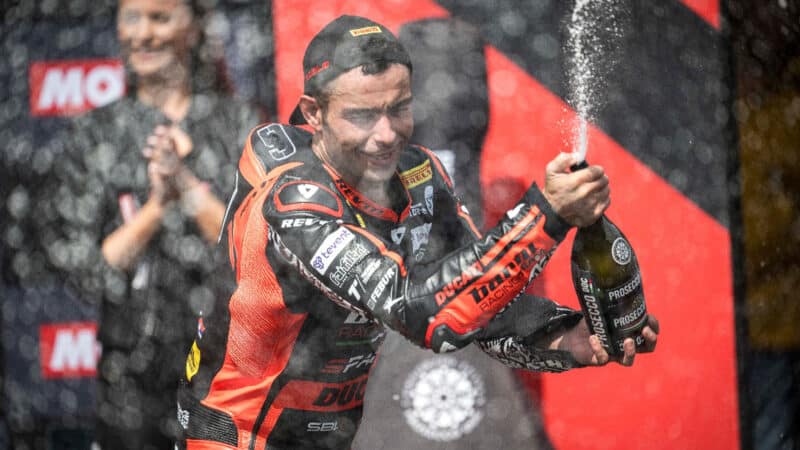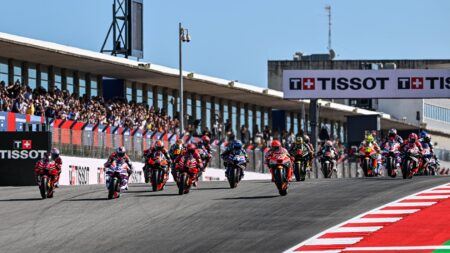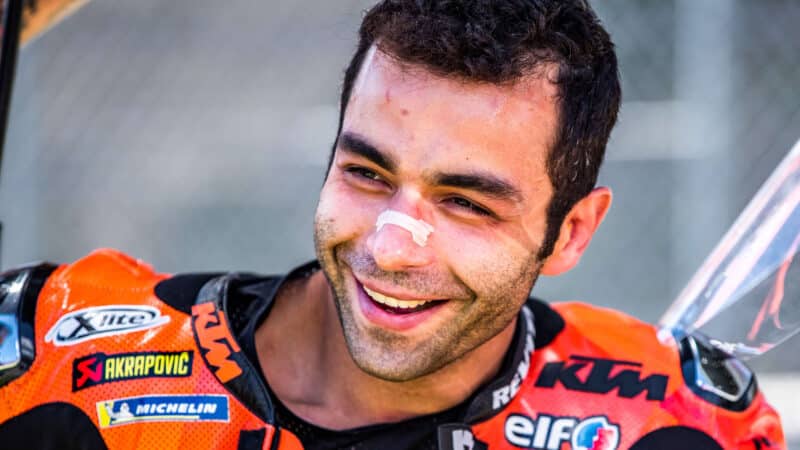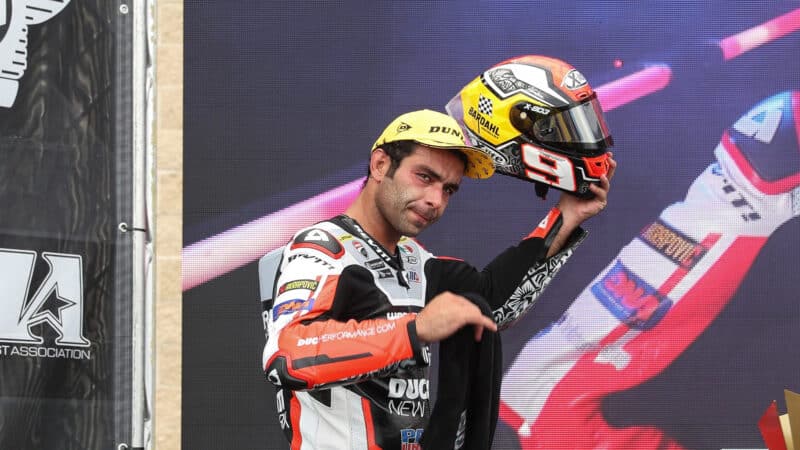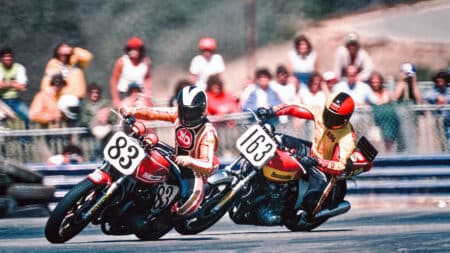Then you have the area where you are going into the corner, with a lot of lean angle and a lot of front brake pressure. The Michelin and Dunlop aren’t strong in this point, because they’re really hard.
The front Pirelli’s construction isn’t hard, so you cannot push a lot in straight braking, but you can stop the bike with some lean angle. The carcass is soft, so it moves around, but it’s really grippy and you need to adapt yourself to this movement, but the bike stays on line so you can really stop the bike in this area.
You can’t do this with the Michelin or Dunlop fronts because they have a stronger construction, so you need to stop the bike before in straight braking, then you need to release the brake.
Moving onto corner entry, front tyre feedback at this point is maybe the most important feature of a race bike, because you need to feel the limit…
At the beginning of the Michelin time in 2016 we still had bikes with a Bridgestone set-up, so we started to lose the front at the apex, when we opened the throttle in the middle of the corner, so we crashed a lot in this area. This is where Marc Márquez always saved crashes with his elbows. Other guys like me could do that sometimes but not all the time.
“If you lose grip for a moment you just lose the front”
Then we started modifying the bikes. With the Michelin front you can’t really push on the tyre when you have a lot of front brake pressure and a lot of lean angle.
To stop the bike in this area, with Michelin and Dunlop you need to let the rear of the bike slide to try to unload the front. You can only use a lot of front brake pressure when the bike is leant over if you start to lose rear traction, so you have to go sideways to unload the front when the bike is starting to go into the apex. If you don’t do this the rear tyre pushes the front tyre and you lose the front immediately, without any warning.
The Pirelli front starts to move and it moves a lot, so you think you are going to crash, but in fact you need to really lock the front to crash. This tyre gives you good warning before you completely lose grip.
Toprak [Razgatlıoğlu] and Alvaro [Bautista] are so good in this area. They make the difference in the last part of corner entry, which is the riskiest area, because if you lose grip for a moment you just lose the front, because you have a lot of lean angle and a lot of front brake pressure.
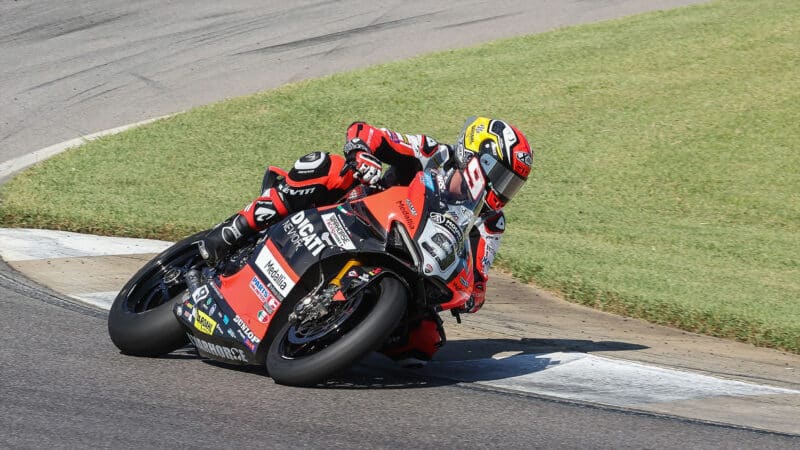
Petrucci and his Dunlop-equipped Panigale fighting for the 2022 MotoAmerica title. Stiff tyres and ageing asphalt were a challenge
MotoAmerica/Brian J Nelson
Brad Binder is sideways on the brakes more than anyone and he says the same thing – he kicks the rear sideways on the brakes, so the sideslip takes some load off the front, which gives him more margin with the front tyre…
When I did MotoGP at Le Mans this year [replacing injured factory Ducati rider Enea Bastianini] I was making a lot of rear slides to help me stop the bike. In fact most MotoGP riders now slide in corner entry like they did many years ago.

